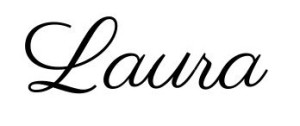How would your life change if you could improve your memory? There are plenty of little ways your life would improve. You would no longer walk into a room and forget what you were doing there. You would no longer leave your keys in the car and lock yourself out. You would avoid those awkward moments where you can’t quite recall someone’s name whom you’ve met a half dozen times before. Improving all of these functions of memory would surely save some time and reduce some awkwardness.
But when you begin to really explore the essential place memory holds in our lives it becomes clear just how much you have to gain from improving and controlling your ability to remember.
What is Memory, Anyway?
Memory is a concept which has fascinated and confounded the greatest thinkers in history. Everyone from philosophers to poets to scientists have attempted to decode what exactly memory is. Many of these well intentioned thinkers have either overcomplicated the function and purpose of memory or written it off too lightly.
Memory is the accumulation of our material life experiences, our imaginations, our visualizations, all of which coalesce to create our associations with the world around us. Our associations form the primary framework which guides our lives.
* If you were bitten by a dog when you were a child then you will likely associate dogs with that pain and those powerless emotions and you will react to dogs negatively.
* If you are given a paycheck every Friday evening you will anticipate Friday evenings and associate them with positive emotions of abundance.
One of the cool things about memory is the fact we form associations from both material experiences and immaterial experiences. This is why athletes visualize themselves performing at their peak before a match. They condition their memory with positive associations of an event which hasn’t occurred yet so by the time their match arrives they’ll perform effectively.
With a few simple Silva Method techniques you can also take control of your memory – both to help you remember the minutiae of your daily life and to create positive associations which will assist you in your future actions.
The Three Finger Technique for Improved Memorization
Let’s look back at athletes again for a minute. One of the biggest stereotypes we have surrounding athletes is their “superstitious” nature. Many athletes are known to eat the same meal before every game, or to go through the same small ritual of motion before pitching a fastball. These seem silly from the outside but when you understand how memory and association work these “superstitions” become highly rational methods for controlling their performance.
Each of those “superstitions” is nothing less than the athlete accessing a positive association they’ve embedded in a physical reality.
You can embed your positive associations into physical reality as well. One of the best techniques for this is Jose Silva’s Three Finger Technique. With this technique you use a meditative practice to first enter into a receptive mental state.
You then imprint a positive association by way of visualization while you are in this state. And finally you embed that positive association into the physical action of pressing your thumb, forefinger and middle finger together. In the future all you need to do is press those three fingers together in the same way to access that positive association and take control over your memory quickly and easily.

